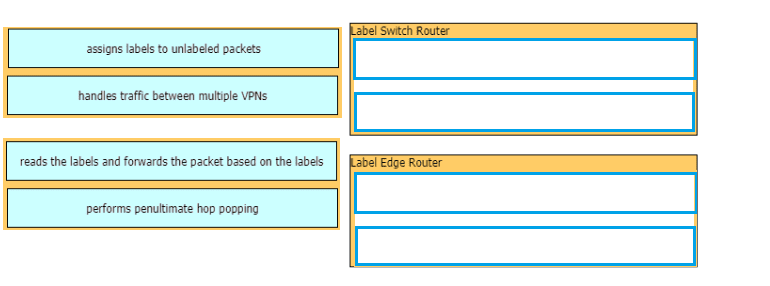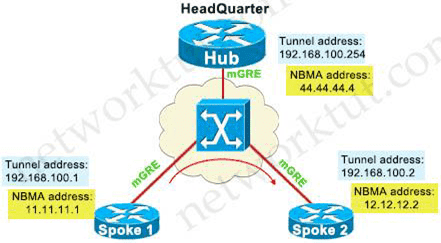Cisco 300-410 - Implementing Cisco Enterprise Advanced Routing and Services (300-410 ENARSI)
A CoPP policy is applied for receiving SSH traffic from the WAN interface on a Cisco ISR4321 router.
However, the SSH response from the router is abnormal and stuck during the high link utilization. The problem is identified as SSH traffic does not match in the ACL. Which action resolves the issue?

Refer to the exhibit. A network engineer configured routers R1 and R2 with MP-BGP. The engineer noticed that the routers cannot exchange any IPv6 routes, however, the IPv4 neighbor relationship is working fine. Which configuration must the engineer apply to router R2 to exchange IPv6 routes?
Refer to the exhibit.

An engineer has configured DMVPN on a spoke router. What is the WAN IP address of another spoke router within the DMVPN network?
Which option is the best for protecting CPU utilization on a device?
Refer to the exhibit.
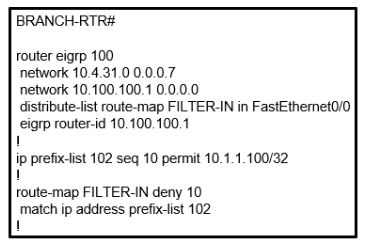
A junior engineer updated a branch router configuration. Immediately after the change, the engineer receives calls from the help desk that branch personnel cannot reach any network destinations. Which configuration restores service and continues to block 10.1.1.100/32?
Refer to the exhibit.
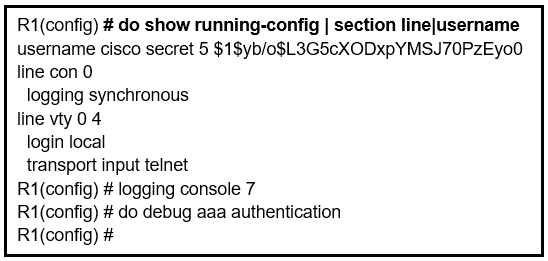
An administrator that is connected to the console does not see debug messages when
remote users log in. Which action ensures that debug messages are displayed for remote logins?
An engineer configured a leak-map command to summarize EIGRP routes and advertise specifically loopback 0 with an IP of 10.1.1.1.255.255.255.252 along with the summary route. After finishing configuration, the customer complained not receiving summary route with specific loopback address. Which two configurations will fix it? (Choose two.)

Which attribute eliminates LFAs that belong to protected paths in situations where links in a network are connected through a common fiber?
Refer to the exhibit.

Which configuration denies Telnet traffic to router 2 from 198A:0:200C::1/64?
A)

B)

C)

D)

Refer to the exhibit.
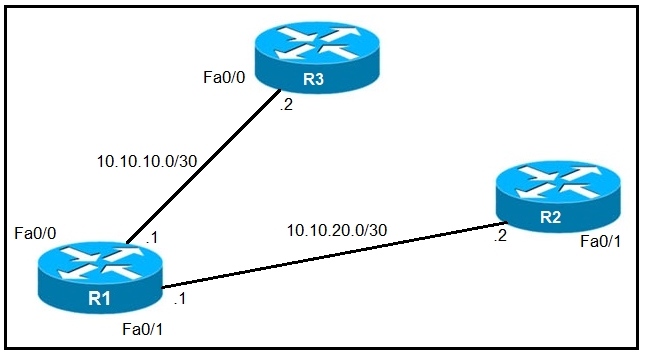
An IP SLA was configured on router R1 that allows the default route to be modified in the event that Fa0/0 loses reachability with the router R3 Fa0/0 interface. The route has changed to flow through
router R2. Which debug command is used to troubleshoot this issue?
Refer to the exhibit.
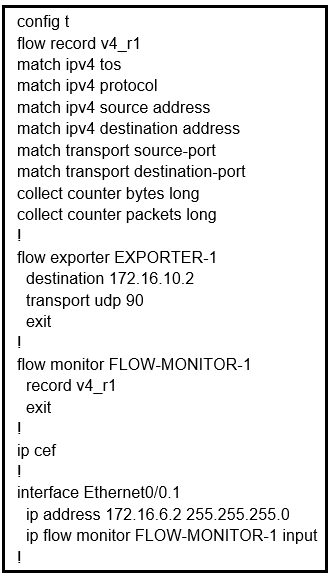
Why is the remote NetFlow server failing to receive the NetFlow data?
Which label operations are performed by a label edge router?
Which two statements about VRF-Lite configurations are true? (Choose two.)
What is a role of route distinguishers in an MPLS network?
Drag and drop the operations from the left onto the locations where the operations are performed on the right.
